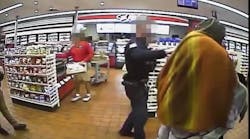FORT LAUDERDALE, Fla. -- -- It may not be a crystal ball, but police are testing a new system that more accurately predicts the likelihood of crime in your neighborhood.
The effort, called predictive policing, relies on computer software that analyzes information police have used for years, along with other data they may have never used before.
It can all be done in real time, quickly putting the information at the fingertips of police, possibly finding correlations they didn't know existed.
A better name might be "probability policing," said Jim Lingerfelt, of IBM, which developed the software, because the program tries to determine the odds of crime happening in a given area.
"You're identifying those areas with the highest probability of a certain type of crime occurring," said Lingerfelt, public safety manager for the company's Global Smarter Cities initiative.
Palm Beach County police agencies have been exploring a similar idea through the county's law enforcement exchange program.
Boca Raton Police Chief Dan Alexander said the exchange hasn't developed any predictive tools, but plans to do so after implementing some more conventional data analysis methods.
The IBM program will take whatever information officials download -- from building permits and crime reports to bus routes and the daily weather forecast -- to see what it can tell police about potential criminal activity.
Among the data that could be compiled: the release date of a burglar who frequently targeted your neighborhood. Or building permits, which might show your neighbors are putting on additions, a magnet for thieves stealing construction materials. Or it could be that police reports are documenting a pattern of car break-ins that indicates your street may be next.
"It's very similar to the information they had before," Lingerfelt said. "But before it was very cumbersome, very labor intensive and nowhere near as complete as what they're getting now in a matter of seconds."
Patrol officers can start off the day on their laptop checking out the trends in their assigned areas, which can help them figure out how best to spend their time. Command staff can use daily reports to direct resources to potential hot spots.
"I think every day that we wake up, that we're part of this law enforcement environment, that we need to be creative and innovative and come up with the next best method on how do we reduce crime," Police Chief Frank Adderley said.
Commissioner Bruce Roberts hopes the program will help police identify and keep track of repeat offenders, which he said could go a long way toward lowering the city's crime rate.
"Most of your crimes are committed by a core few criminals," said Roberts, a former police chief in the city. "When they're released, they've been arrested again."
The city last week approved using $200,000 in federal law enforcement dollars to pay overtime to a task force of detectives, patrol officers and others who can be assigned as needed, based on the computer analysis.
Copyright 2014 - Sun Sentinel
McClatchy-Tribune News Service


